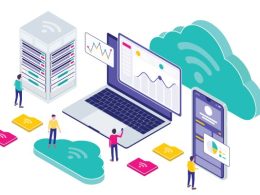In the era of evolving work dynamics, the paradigm shift towards remote employment has become a defining feature of modern workplaces. Remote work, encompassing a spectrum from home-based offices to co-working spaces, offers unparalleled flexibility and significant cost savings.
However, this transformative model has its challenges. This article delves into the essential components of building a solid remote work culture, specifically focusing on remote employee engagement.
As organisations navigate the complexities of a decentralised workforce, the critical role of engagement emerges as a linchpin for creating a positive, productive, and cohesive virtual work environment.
From productivity-enhancing practices to integrating advanced tools and strategic measurement techniques, the journey to building a robust remote work culture unfolds against unprecedented workplace evolution.
Remote work – definition, benefits, and challenges
Remote work refers to an arrangement where employees perform tasks outside the traditional office environment. This can include working from home, co-working spaces, or any location with internet connectivity.
The benefits of remote work are substantial. Firstly, employees enjoy increased flexibility, enabling a better work-life balance. Secondly, companies gain access to a global talent pool, diversifying their teams and fostering innovation.
Additionally, remote work leads to company cost savings, reducing expenses associated with office space, utilities, and other overheads while employees save on commuting.
However, remote work comes with its set of challenges. Communication barriers may arise due to physical distance, potentially hindering collaboration and information flow. Feelings of isolation among remote workers can impact morale and well-being.
Furthermore, monitoring productivity becomes challenging, necessitating practical tools and strategies to ensure accountability and performance management.
Overcoming these challenges while maximising the benefits requires thoughtful consideration and implementing remote work best practices.
Why Do You Need to Improve Remote Employee Engagement?
Remote employee engagement measures how connected and committed remote workers are to their jobs and the organisation. It goes beyond mere task completion, encompassing motivation, satisfaction, and a sense of belonging.
Improving remote employee engagement is imperative for fostering a positive and productive work environment in virtual settings.
Productivity
In terms of productivity, establishing clear expectations is a fundamental aspect of remote work. When remote employees understand their roles and responsibilities, they can align their efforts with organisational goals.
Furthermore, providing necessary resources and support ensures remote workers have the tools and assistance to perform effectively. This approach not only boosts individual productivity but also contributes to the overall success of remote teams.
Positive Company Culture
Positive company culture plays a pivotal role in remote employee engagement. Fostering a sense of belonging is essential to counter feelings of isolation. Companies can create a cohesive virtual community by promoting shared values and a clear mission.
A positive company culture enhances remote employees’ well-being and contributes to a more engaged and motivated workforce.
Improved Collaboration
Improved collaboration is a crucial driver of remote employee engagement. Utilising collaborative tools facilitates seamless communication and project coordination among remote team members.
Moreover, virtual team-building activities are vital in building interpersonal connections and fostering a collaborative work environment. These initiatives enhance remote employees’ overall engagement and satisfaction, contributing to a thriving remote work culture.
Best Practices for Remote Employee Engagement
Remote employee engagement thrives on best practices that create a sense of connection, motivation, and continuous development. Implementing these strategies is essential for organisations seeking to maximise productivity and employee satisfaction in remote work.
Provide Training
Training is a cornerstone of remote employee engagement. Companies should invest in continuous skill development to ensure remote workers stay updated with industry trends and enhance their professional capabilities.
Virtual onboarding programs are crucial for introducing new employees to the company culture and equipping them with the tools for remote success. Leveraging tools like LinkedIn Learning or Udemy for Business can provide diverse training resources.
Give Feedback
Feedback mechanisms are vital for remote teams. Regular performance evaluations help in setting expectations and identifying areas for improvement. Constructive feedback mechanisms, such as tools like Slack or Microsoft Teams, enable real-time communication and collaboration, nurturing a culture of continuous improvement.
Praising and recognising achievements contribute significantly to remote employee engagement. Celebrating milestones and team successes creates a positive work environment. Tools like Bonusly or TINYpulse can be employed for peer-to-peer recognition, fostering a culture of appreciation and motivation.
The Power of Tools
Using the right tools is crucial for effective remote collaboration. Implementing communication tools like Zoom or Slack ensures seamless connectivity and information sharing.
Collaboration platforms like Microsoft Teams or Asana enhance project management and coordination. These platforms provide a centralised space for team collaboration, ensuring projects stay on track and team members are aligned with objectives.
All team members should have access to the relevant files and documents from an online filing cabinet to collaborate. An electronic filing system software like FileCenter enables seamless scanning and organizing documents, ensuring that all members have access to necessary records at their fingertips, irrespective of their physical location.
Tools like Blueboard or GiversBox can automate and streamline the appreciation process for recognition and gifting, making it more engaging and impactful.
The managers should be mindful of employees’ problems and look for ways to make daily operations run smoothly. For example, there is no way to schedule Google posts from Google Business listing. But there is a way around it. Google My Business post scheduler app like OneUp, allows for automating posts on GMB, saving time and reducing the space for errors.
Collectively, these tools contribute to a holistic approach to remote employee engagement and embracing them creates an environment conducive to productivity and success in virtual work settings.
Measuring Remote Employee Engagement
Employee engagement measurement is essential for organisations to understand the effectiveness of their strategies and create a positive and productive remote work environment. Choosing relevant and reliable employee engagement metrics is the first step in this process.
Choose Relevant and Reliable Metrics
In gauging remote employee engagement, many metrics come into play. These metrics must encapsulate remote work’s distinctive facets and hurdles – from productivity and collaboration to communication, satisfaction, and overall well-being.
Each metric serves as a vital checkpoint, offering insights into the intricacies of sustaining engagement and retaining talent in a virtual work environment. The emphasis on these aspects aligns with the overarching goal of cultivating a strong remote work culture where employees feel connected, motivated, and committed despite the physical distances.
Here are some of the metrics to consider:
Employee Retention Rate
This metric gauges the number of employees who remain with the company over a specific period. High retention rates suggest employees are satisfied and engaged, while frequent turnover may indicate underlying issues. Monitoring the remote employee retention rate allows organisations to assess the success of their engagement initiatives and identify improvement areas.
Employee Effort Score (EES)
The EES measures employees’ efforts to accomplish their tasks. This metric provides insights into remote workers’ challenges and overall experience. A high EES indicates potential engagement issues, while a low score suggests that employees find their tasks manageable.
Regularly assessing the EES helps organisations tailor strategies to alleviate potential sources of stress and improve overall engagement.
Employee Satisfaction Index
This index encompasses various factors influencing remote employee satisfaction, including work-life balance, communication effectiveness, and professional development opportunities.
Organisations can gather data to calculate the employee satisfaction index through surveys and feedback mechanisms. A high satisfaction index indicates content and engaged employees, while a lower score prompts a closer examination of specific areas requiring attention.
Strategies for Measuring Engagement
eNPS (Employee Net Promoter Score)
The eNPS measures the likelihood of employees recommending their organisation as a great workplace. It involves a single-question survey where employees rate their likelihood to recommend the company on a scale.
Simply put, it looks something like this: ‘On a scale from 0-10, how likely are you to recommend our brand/company to a friend or colleague?’
This method provides a quick snapshot of overall employee sentiment. A higher eNPS suggests a positive work environment and strong employee advocacy, while a lower score may signal potential issues requiring further investigation.
Pulse Surveys
Pulse surveys are brief, frequent surveys designed to capture real-time feedback on specific aspects of remote work. These surveys enable organisations to quickly assess employee sentiments, identify emerging issues, and make timely adjustments.
Deploying pulse surveys at regular intervals ensures a continuous feedback loop, allowing organisations to adapt their strategies to evolving circumstances and maintain high levels of employee engagement.
360 Surveys
A 360-degree survey collects feedback from multiple sources, including peers, subordinates, and supervisors. This comprehensive approach provides a holistic view of an employee’s performance and engagement. A 360 feedback to your supervisor helps evaluate collaboration, communication, and leadership skills in a remote setting.
Leveraging this method promotes transparency and ensures a well-rounded understanding of individual and team dynamics, contributing to a more engaged and cohesive remote workforce.
Final Thoughts on Remote Employee Engagement
The journey towards building a robust culture concludes with a resounding emphasis on remote employee engagement. As organisations grapple with the intricacies of decentralised workforces, the significance of fostering connection, motivation, and commitment among remote employees stands paramount.
The multifaceted strategies explored, from setting clear expectations and providing necessary resources to leveraging collaborative tools and implementing effective feedback mechanisms, collectively contribute to a positive and productive remote work environment.
Recognising the importance of continuous development, praise, and recognition, coupled with integrating advanced tools, underscores the commitment to enhancing overall engagement.
The conclusive message is clear: in remote work, a strong culture hinges on proactive measures, data-driven insights, and a steadfast dedication to ensuring employees feel valued, connected, and motivated in their virtual endeavours.
The future of work is here, and its success lies in cultivating a thriving remote work culture.












